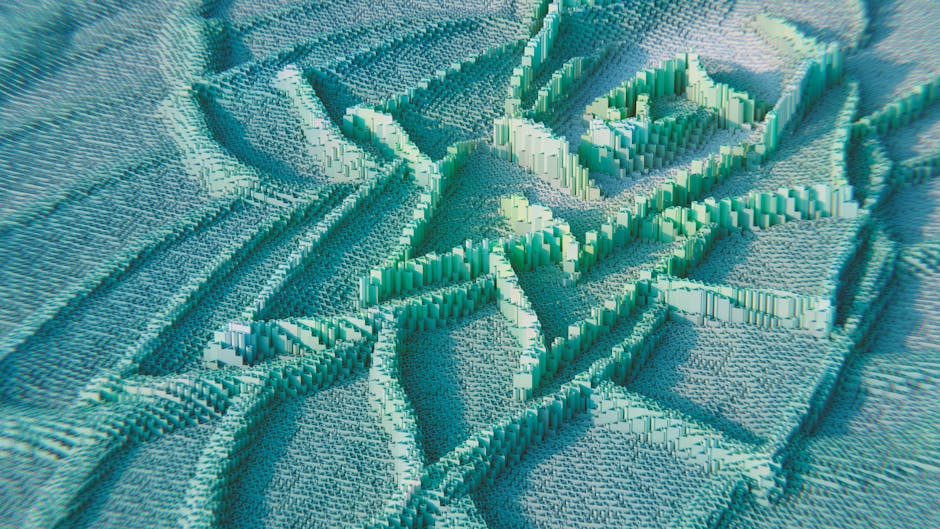Revolutionizing Manufacturing with 3D Printing: A Comprehensive Guide for Workplace Managers
“3D printing technology is revolutionizing how organizations approach manufacturing, prototyping, and customization. This comprehensive guide explores the fundamentals of additive manufacturing, its applications across industries, and how workplace managers can leverage this technology to optimize workflows, reduce costs, and foster innovation within their teams. ”

The Evolution of 3D Printing in the Modern Workplace
3D printing, also known as additive manufacturing, has transformed from a niche technology into a mainstream manufacturing solution that's reshaping how organizations approach production, prototyping, and customization. Unlike traditional manufacturing methods that subtract material to create objects, 3D printing builds objects layer by layer from digital designs, offering unprecedented flexibility and efficiency for workplace managers across industries.
The technology works by translating digital files into physical objects through a layering process, allowing for the creation of complex geometries that would be difficult or impossible to achieve with conventional manufacturing techniques. This revolutionary approach is changing not only what we can create but how we create it.

Understanding 3D Printing Technologies
There are several 3D printing technologies available today, each with distinct advantages for different workplace applications:
Fused Deposition Modeling (FDM)
FDM is one of the most common and accessible 3D printing technologies. It works by extruding thermoplastic filament through a heated nozzle, depositing material layer by layer. This technology is ideal for:
- Quick prototyping of concepts
- Creating functional parts for testing
- Educational environments where cost-effectiveness is crucial
- Office settings where minimal infrastructure is required
Stereolithography (SLA) and Digital Light Processing (DLP)
These technologies use light to cure liquid resin into solid objects, offering exceptional detail and smooth surface finishes. They excel at:
- Creating high-resolution prototypes
- Producing detailed models for presentations
- Dental and medical applications requiring precision
- Jewelry and artistic applications
Selective Laser Sintering (SLS)
SLS uses a laser to sinter powdered material (typically nylon or other polymers) into solid structures. This technology is valuable for:
- Creating durable functional prototypes
- Manufacturing end-use parts
- Complex geometries without support structures
- Parts that need to withstand mechanical stress
Metal 3D Printing
Technologies like Direct Metal Laser Sintering (DMLS) and Electron Beam Melting (EBM) allow for the printing of metal parts, opening up applications in:
- Aerospace components
- Medical implants
- Custom tooling and fixtures
- Replacement parts for machinery

Applications of 3D Printing Across Industries
The versatility of 3D printing has led to its adoption across numerous sectors, transforming workflows and creating new possibilities:
Manufacturing and Engineering
In manufacturing environments, 3D printing enables:
- Rapid prototyping that accelerates product development cycles
- Custom jigs and fixtures that improve assembly efficiency
- Replacement parts printed on-demand, reducing inventory costs
- Complex components that would be difficult to machine traditionally
Healthcare and Medical
The medical field has embraced 3D printing for:
- Patient-specific anatomical models for surgical planning
- Custom prosthetics and orthotics at reduced costs
- Dental implants and aligners tailored to individual patients
- Bioprinting research for tissue engineering
Education and Research
Educational institutions utilize 3D printing for:
- Hands-on learning experiences across disciplines
- Visualization of complex concepts through physical models
- Student design projects and competitions
- Research applications requiring custom equipment
Architecture and Design
Architects and designers leverage 3D printing for:
- Detailed architectural models with precise scaling
- Concept visualization for client presentations
- Testing of design iterations quickly
- Custom furniture and fixture prototypes
Benefits of Implementing 3D Printing in Your Workplace
Integrating 3D printing into your office space optimization strategy offers numerous advantages:
Cost Reduction and Efficiency
3D printing can significantly reduce costs by:
- Eliminating the need for expensive tooling for small production runs
- Reducing material waste compared to subtractive manufacturing
- Decreasing lead times for parts and prototypes
- Enabling on-demand production that minimizes inventory requirements
Enhanced Innovation and Creativity
The technology fosters innovation by:
- Allowing rapid iteration of design concepts
- Removing traditional manufacturing constraints
- Enabling complex geometries previously impossible to produce
- Providing tangible feedback early in the design process
Customization and Personalization
3D printing excels at customization:
- Each print can be unique without additional tooling costs
- Products can be tailored to individual needs or preferences
- Small batch production becomes economically viable
- Mass customization becomes a realistic business model
Improved Collaboration and Communication
Teams benefit from improved collaboration through:
- Physical models that communicate concepts better than 2D drawings
- Rapid prototyping that facilitates design discussions
- Shared digital files that enable remote collaboration
- Tangible objects that bridge communication gaps between departments

Implementing 3D Printing in Your Organization
Successfully integrating 3D printing into your workplace requires careful planning:
Assessing Needs and Opportunities
Begin by identifying where 3D printing can add the most value:
- Which departments could benefit from rapid prototyping?
- Are there opportunities to reduce costs on custom parts or tooling?
- Could customer experiences be enhanced through customization?
- Are there inefficiencies in your current product development process?
Selecting the Right Equipment
Choose equipment based on your specific requirements:
- Consider the materials you'll need to work with
- Evaluate build volume requirements for your typical applications
- Assess the precision and surface finish needed
- Factor in maintenance requirements and total cost of ownership
Training and Skill Development
Prepare your team for success with proper training:
- Provide basic training on 3D design principles
- Develop expertise in specific design software
- Establish best practices for file preparation and printing
- Create a knowledge-sharing system for techniques and applications
Integrating with Existing Workflows
For maximum benefit, integrate 3D printing with your existing processes:
- Establish clear protocols for requesting 3D printed parts
- Create a digital library of commonly used designs
- Develop metrics to track the impact on efficiency and costs
- Regularly review and optimize the integration process
Overcoming Common Challenges
While implementing 3D printing, you may encounter several challenges:
Quality and Consistency
Ensure consistent quality by:
- Establishing quality control procedures
- Regularly maintaining and calibrating equipment
- Standardizing material handling and storage
- Documenting successful print parameters
Material Limitations
Address material constraints by:
- Researching new materials as they become available
- Testing materials thoroughly before production use
- Understanding the environmental factors affecting material performance
- Considering post-processing techniques to enhance material properties
Design for Additive Manufacturing
Optimize designs for 3D printing by:
- Training designers in additive manufacturing principles
- Creating design guidelines specific to your equipment
- Utilizing topology optimization software
- Implementing design review processes focused on printability
Scaling Production
As needs grow, scale your 3D printing capabilities by:
- Evaluating when to use in-house printing versus service bureaus
- Considering automated solutions for high-volume needs
- Implementing print farm management software
- Developing clear criteria for technology investment decisions

Future Trends in 3D Printing
Stay ahead by monitoring these emerging trends:
Multi-Material and Composite Printing
The ability to print with multiple materials simultaneously is advancing:
- Enabling functional gradients within parts
- Creating objects with varying mechanical properties
- Reducing assembly requirements through integrated components
- Opening new possibilities for product design
Artificial Intelligence and Automation
AI is transforming the 3D printing workflow:
- Generative design algorithms create optimized structures
- Print monitoring systems detect and correct errors in real-time
- Predictive maintenance reduces downtime
- Automated post-processing improves efficiency
Sustainability Initiatives
Environmental considerations are driving innovation:
- Biodegradable and recycled materials are becoming more common
- Closed-loop material recycling systems reduce waste
- Energy-efficient printing processes lower carbon footprints
- Local production reduces transportation impacts
Integration with Industry 4.0
3D printing is becoming a key component of smart manufacturing:
- Digital inventory replaces physical storage
- Distributed manufacturing networks enable production near point of use
- IoT-connected printers provide real-time production data
- Digital twins facilitate virtual testing before physical production
Case Studies: Success Stories in Workplace Implementation
Manufacturing Company Reduces Tooling Costs by 70%
A medium-sized manufacturing company implemented FDM printing for custom jigs and fixtures, resulting in:
- 70% reduction in tooling costs
- 85% decrease in lead time for new tools
- Improved ergonomics through worker-specific designs
- Enhanced ability to iterate tool designs based on feedback
Architectural Firm Transforms Client Presentations
An architectural firm integrated SLA printing into their workflow optimization strategy:
- Reduced model creation time from weeks to days
- Increased client engagement through tactile models
- Improved communication of complex design concepts
- Created new revenue stream through model creation services
Medical Device Company Accelerates Development Cycle
A medical device manufacturer adopted 3D printing for prototyping:
- Reduced development cycle by 40%
- Decreased prototype costs by 60%
- Enabled more design iterations within the same timeframe
- Improved final product quality through extensive testing
Getting Started: A Roadmap for Workplace Managers
If you're ready to implement 3D printing in your organization, follow this roadmap:
1. Establish Clear Objectives
Define what you want to achieve with 3D printing:
- Specific cost reduction targets
- Time-to-market improvements
- Enhanced customization capabilities
- Innovation and creativity goals
2. Start Small and Scale
Begin with focused applications:
- Identify a pilot project with measurable outcomes
- Select technology appropriate for your initial needs
- Document results and lessons learned
- Use success to build support for expansion
3. Build Internal Expertise
Develop in-house knowledge:
- Designate champions within each relevant department
- Invest in training and certification programs
- Create internal user groups to share knowledge
- Consider partnerships with educational institutions
4. Develop a Long-Term Strategy
Plan for growth and evolution:
- Create a technology roadmap aligned with business goals
- Establish metrics to evaluate success and ROI
- Regularly review and update your strategy
- Stay informed about emerging technologies and applications
Conclusion: Embracing the 3D Printing Revolution
3D printing represents a fundamental shift in how we approach design, prototyping, and manufacturing. For workplace managers across industries, this technology offers unprecedented opportunities to enhance efficiency, foster innovation, and create new value for customers and stakeholders.
By understanding the capabilities, applications, and implementation strategies for 3D printing, you can position your organization to take full advantage of this transformative technology. Whether you're looking to streamline product development, reduce costs, or enable new business models, 3D printing provides powerful tools to achieve your goals.
As the technology continues to evolve, those who embrace its potential will find themselves with a significant competitive advantage in an increasingly digital and customized world. The time to explore and implement 3D printing in your workplace is now.